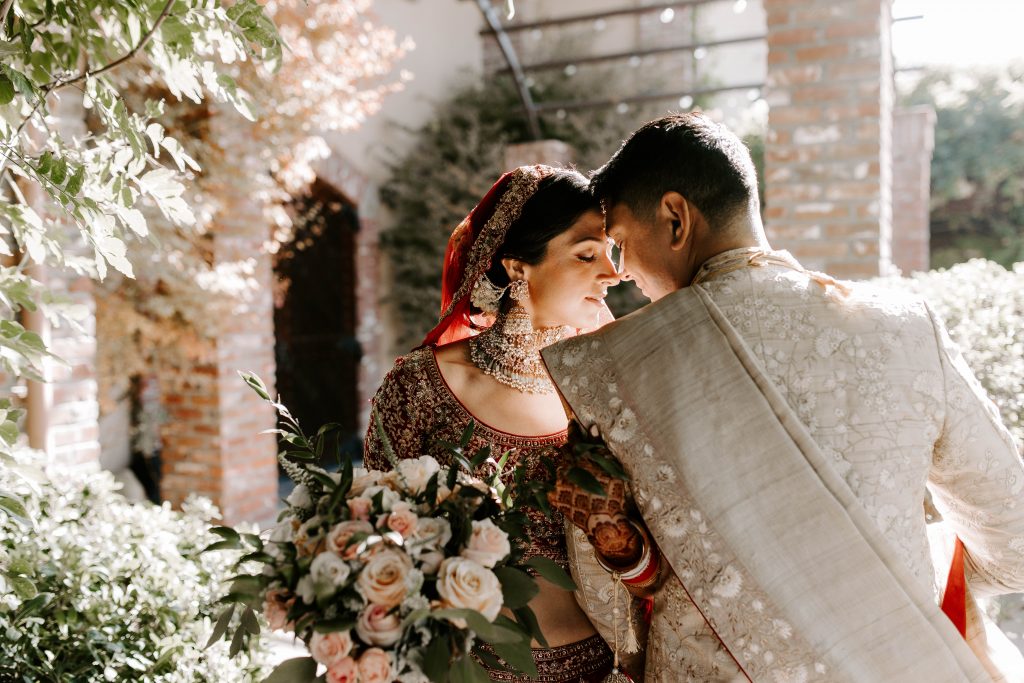
Photo by Usman B Photography.
Planning an Indian wedding can seem daunting at first. Especially as there are so many events to plan and details to manage.
We at the Palm Event Center in the Vineyard are very familiar with Indian weddings as we have them often. If this is your first time researching Indian weddings, read on about the first steps in planning your wedding and what events are key. Depending on religion and region of India, these details can differ. We are mostly referring to Hindu weddings.
BEGINNING YOUR PLANNING JOURNEY
Auspicious Dates
The first step usually for a couple is the divination of a few auspicious dates and times (Muhurtham) from a priest based on the horoscopes of the bride and groom and Vedic astrology. This will help you greatly in figuring out when to get married and where. Many families want couples to get married sooner than later, however, make sure the date works for you. Different times of year have different costs and weather, in addition to general availability for the venue you want. In general, 12 months is a very reasonable timeframe to plan a wedding.
Guest List
Begin making a rough guest list. This is very important as it will determine which venues you should contact due to your guest count size.
Wedding Geographic Location
Before deciding the specific venue(s) you will have your wedding events at, first determine geographic location. Does your family want you to have two weddings – one in India and one in America? Do you have a specific area that is easier for your family to gather? Or, do you have a favorite location as a couple that you would love to get married at? A plug for Livermore Valley: Livermore Valley Wine Country (Tri-Valley) is a beautiful area for an Indian wedding. The venues are in an agricultural area, thus meaning more room for baraats and potentially larger guest counts. It’s also centrally located for most Bay Area guests.
Wedding Venue
Once you have the general region, you can then go about finding a suitable location for your wedding events. Many couples decide to have their wedding close to home as some of the events are easier to host out of an actual home (usually the bride’s family, such as the Mehndi), however, this doesn’t have to be the case. Look for venues that have ample space for a ceremony and reception and have outdoor grounds for a baraat (if you are having one).
Next Steps
Once you have a date and venue, then the real planning can begin. Ask your venue if they have vendors they recommend. Find a wedding planner who specializes in Indian weddings or find a venue (like the Palm Event Center) who has a lot of experience planning all-day Indian events. Their experience will be invaluable in knowing how logistically Indian weddings flow. Also, decide what kind of cuisine you will be serving at each event and which vendor you will contract with. Vendors you should book early are: catering, lighting, florals, DJ, and photography/videography. Later, you can place orders for rentals and cake. Also, remember that you should give yourself at least 4 months for wedding outfits to be ready.
ALL THE WEDDING EVENTS
Engagement Celebrations & Party
The engagement celebrates the upcoming wedding of the couple. Often this involves individual traditions, such as the Roka ceremony where families meet and give tokens to the couple to show they are accepted into each other’s families. Some couples may host a formal engagement party, which can almost turn into a mini wedding and is the first time of the families gathering together.
Mehndi Ceremony
Henna tattoos play a vital part of an Indian wedding. Prior to the wedding, intricate designs are painted onto arms, hands, and feet. The timing of this ceremony is up to the couple. Sometimes, this happens at the Sangeet, sometimes this is hosted separately. Usually, it is the night before the wedding and the bride’s family organizes it and invites all female family members on both sides. It’s often a relaxed vibe with some live entertainment.
Haldi Ceremony
Some couples may have a Haldi ceremony where a mixture of turmeric, oil, and water is rubbed on the couple by married men and women from both sides.
Sangeet Ceremony
Often, a Sangeet ceremony will follow the Haldi ceremony in the evening. This is usually one to two days prior to the wedding ceremony and reception. A Northern Indian tradition, this ceremony traditionally was a female-only event, however, couples are now hosting the event together and inviting a mixture of men and women as a wedding welcome party. The name has its roots in “song” and thus it’s a night of singing, dancing, and celebrating the couple’s new journey together. Often, couples will select a theme for the evening and the dances/performances will align with this theme. Games are also a key part of the evening as well. While there is no formal tradition of having cake with a Sangeet, we have seen most couples include this in their evening.
Wedding Ceremony & Reception
Baraat & Milni
The actual wedding day is a day-long event and the most intense planning of all days. Traditionally, the day will begin with a baraat. This is when the groom and family members will parade around the wedding venue before presenting themselves to the bride’s family at the front doors of the venue. For many years mostly white horses were used as the mode of transportation for the groom. However, in more recent years, we have seen fancy cars making more of an appearance. The baraat ends with the Milni. This is where the groom arrives at the front doors and is accepted by the bride’s family through a combination of garlands and other items.
Planning Tip: make sure you book a venue with ample space and relatively no traffic for the baraat. Also, double-check with them regarding the mode of transportation you intend to use. Permitting for certain types of animals, etc. may be an issue. Also, remember to book a dohl player and DJ/sound system for this as well! Typically, your pundit will direct you during this ceremony and they may bring some items to be used during the Milni.
Hindu Ceremony
Often a Hindu ceremony lasts between 1.5 and 2 hours. A mandap is set in the ceremony area. The groom will enter fist with family (bride’s and groom’s) and guests behind. The bride usually arrives 30 minutes into the ceremony. An uncle or maternal male family members will usually escort the bride under a cloth or floral covering. Bridesmaids may walk in (usually in pairs) prior to the bride with candles or trays. A pundit will dictate the ceremony itself and it will usually involve a tray of symbolic food items, an open fire/flame, and lots of other symbolism. Our favorite part is the circling of the flame, which symbolizes the 7 vows the couple takes, including uniting their souls.
Planning Tip: When you book your wedding venue, make sure that the venue allows a ceremonial flame if this is important to you. Also ask if you are required to fill out any permitting paperwork to allow this to happen (especially indoors).
Lunch
A break usually happens between the ceremony and evening wedding reception where the couple treats the guests to a casual lunch. Usually, this involves foods that are regional to the couple’s families and it’s a time for guests to mingle and relax. This sometimes happens at the wedding venue, and other times it is offsite. Lunch usually lasts 90 minutes. If holding onsite, guests will be most likely be asked to leave the wedding venue so that the staff can reset the room for the evening reception.
Planning Tip: A new trend seems to be couples having a Hindu ceremony going straight into a cocktail hour and then the reception. This can save money as the couple skips the fees associated with hosting a longer event and additional meal (lunch).
Western/Secular Ceremony
Couples may do a Western/Secular ceremony before the wedding reception. Usually these last around 30 minutes prior to cocktail hour.
Cocktail Hour & Reception
Typically, a reception will begin with a cocktail hour and then followed by the formal dinner reception. During cocktail hour, and perhaps slightly before, the couple will take wedding photos. The guests will then be invited into the reception room for a dinner. In the past, couples insisted on a buffet-style dinner service to show the abundance of food for guests, however, we have seen more and more couples paying a slightly higher fee for more formal services, such as family-style and sit-down, to show a higher level of event toward guests. Although not traditional, a cake is usually present and cut right after the introductions of the couple.
Planning Tip: Make sure your caterer provides a list of allergens to you and serving staff for all foods served at each event. If you will be having a buffet, also make sure the caterer provides buffet labels for each dish that lists this information.
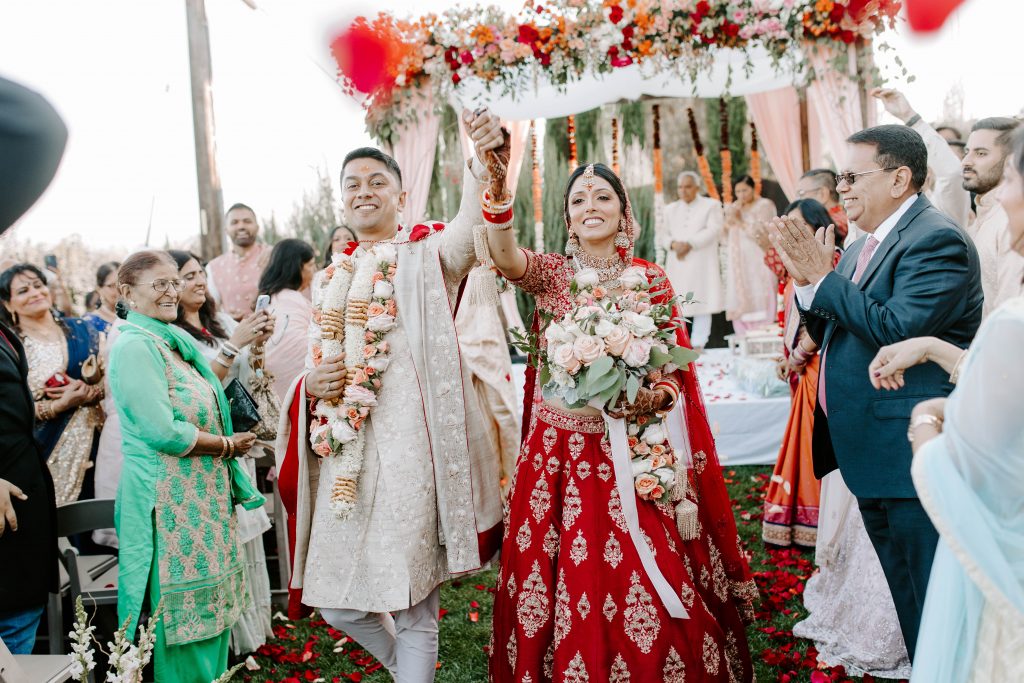
Photo by Usman B Photography.

Photo by JSK Photography.

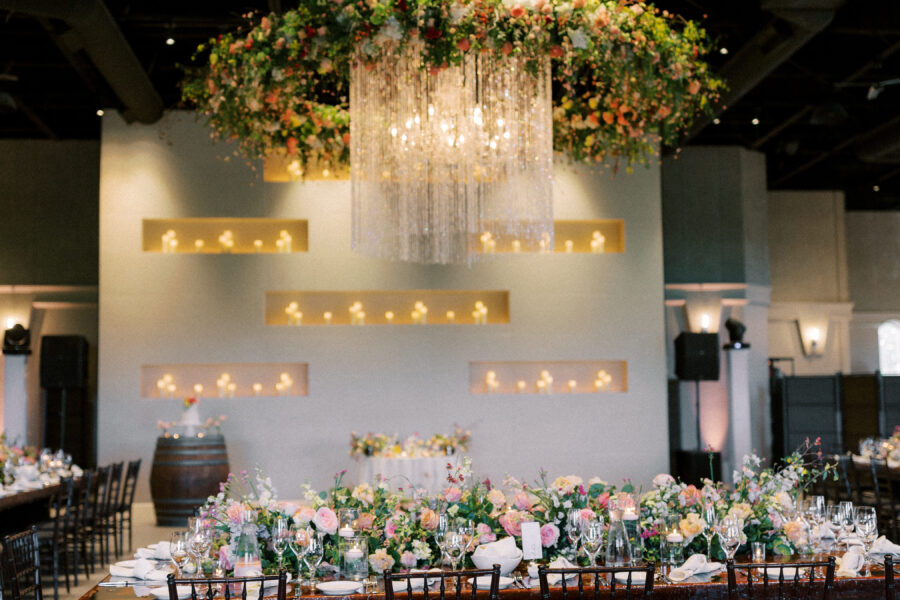
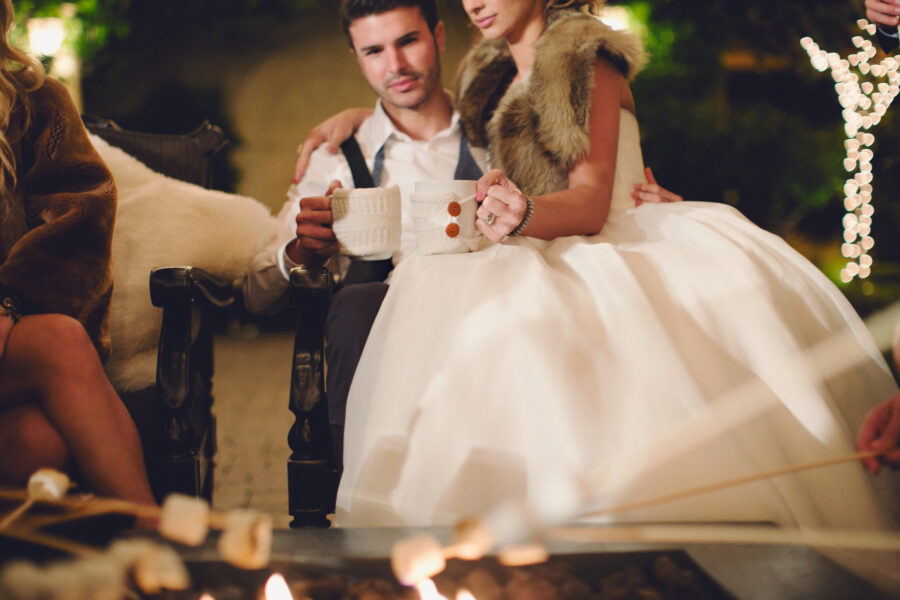
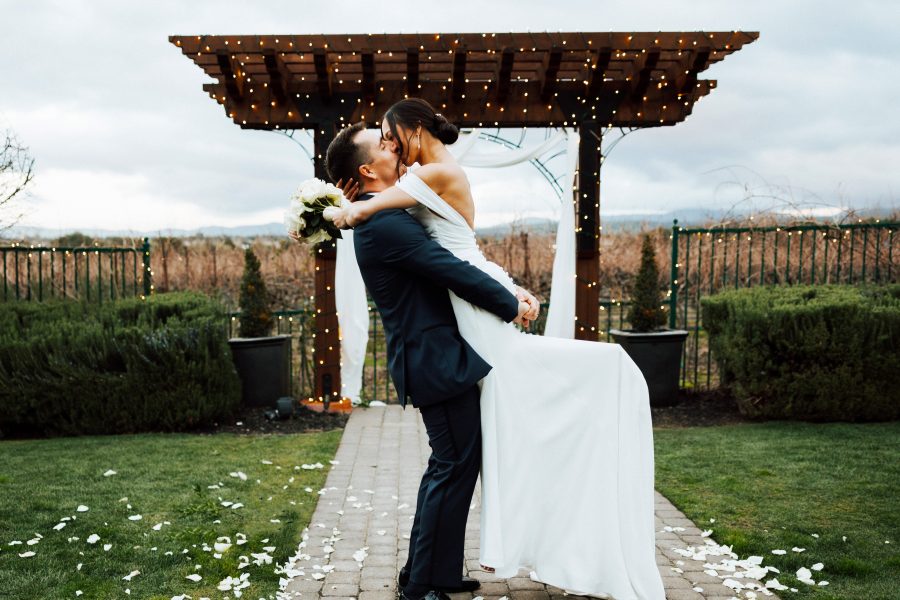
Leave a Reply